 |
|
|
|
| |
B-26 G Marauder built by Martin. 5,266 were built during World War 2. The B-26 sustained the lowest loss rate of all allied bombers. The Marauder flew 110,000 sorties mostly in Europe. The range was 1,100 miles with 4,000 lbs of bombs.
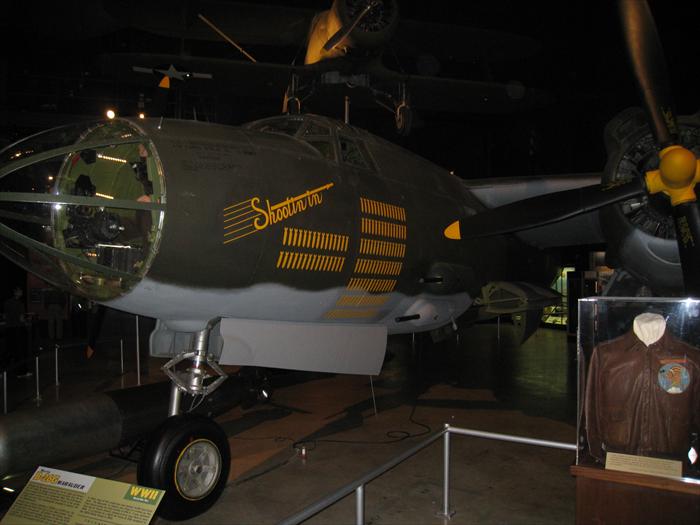
|
SR-71 Blackbird built by Lockheed. Entered service in January 1966 and still maintains speed and altitude records. It served for 24 years while most missions are still classified, just imagine what kind of planes they have now because it was well over a decade before the public knew anything about this plane. It could survey 100,000 square miles per hour back in the 1960s.
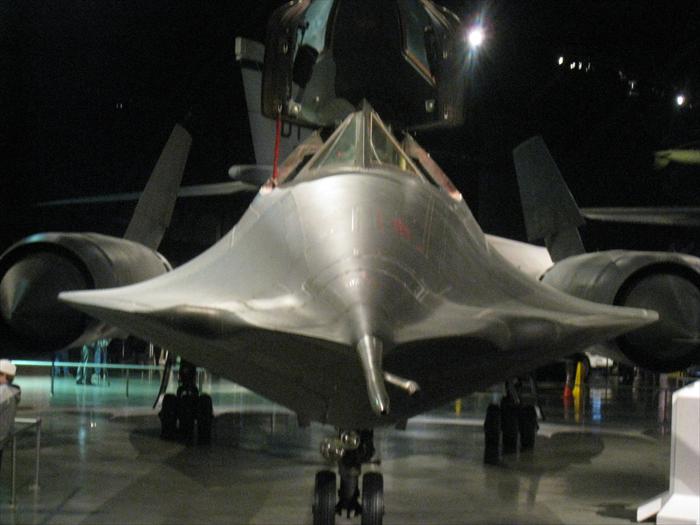
|
P-51 Merlin engine (Packard V-1650). This engine is liquid cooled and created by the British. The United States created its own Merlin engine for mass production in Detroit where over 16,000 were built. The Merlin engine was most known for its unique sound in the P-51 Mustang but also provided power to the Spitfire, Mosquito, Lancaster and even the P-40 in later models.
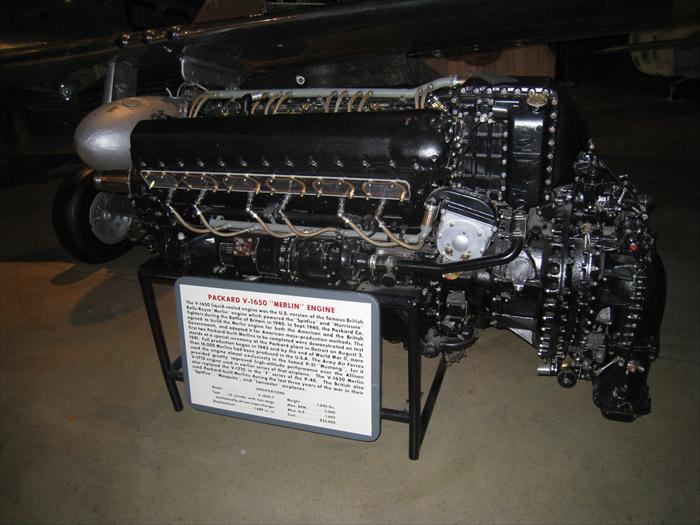
|
| |
B-24 Liberator Strawberry Bitch. The B-24 does not get the recognition that the B-17 does but it was a very formidable bomber. Its extended range made it will suited for all theaters during World War II. The B-24 was meant to be a major upgrade over the previous B-17 bomber. The B-24 was the most mass produced plane of the war, 18,190 were manufactured.
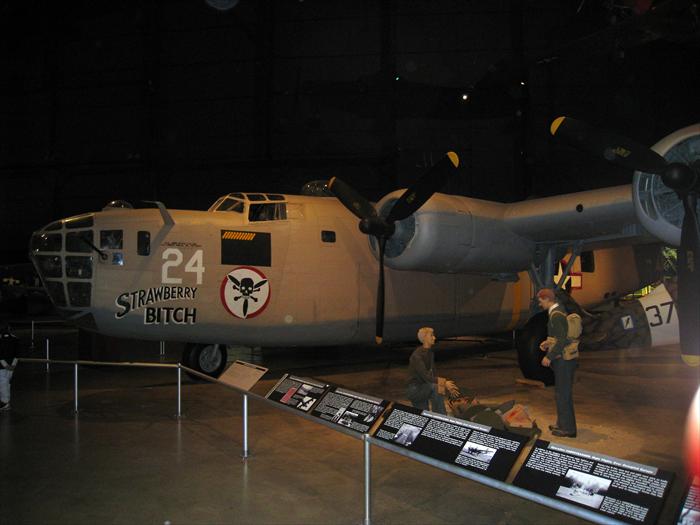
|
PBY Catalina was a flying boat built by Consolidated. During World War II the PBY would become infamous serving in every role the military could throw at her. Some of its duties included maritime patrol, anti-submarine warfare, search and rescue to name a few. Around 4,000 were built and many still fly today as firefighting. The PBY was prominently featured in the movie Midway were it spots the Japanese carriers.
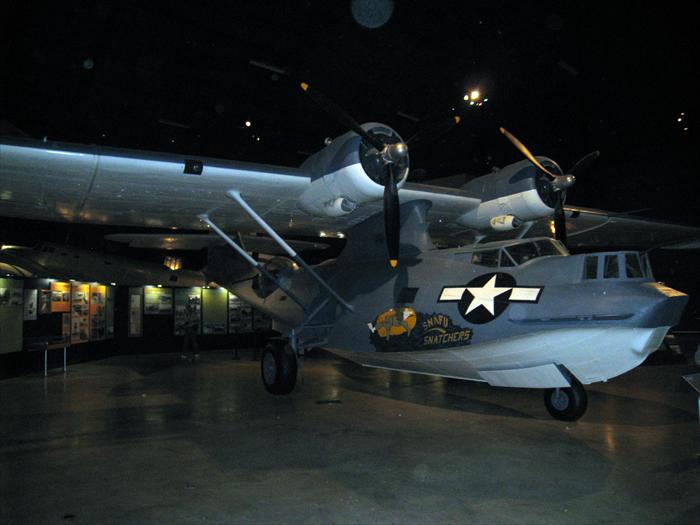
|
SPAD VII World War I airplane. American volunteers flew this plane with the French. The SPAD was also flown by British and French sqadrons on the front from 1916 through 1918.
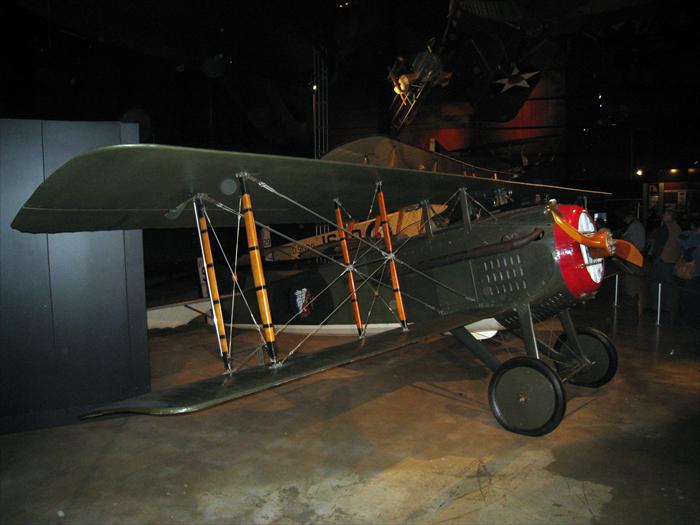
|
| |
Nieuport 28 was the first plane flown by American Expeditionary Forces (AEF) during World War I. The plane did not service long as the SPAD XIII replaced it but even World War I ace Eddie Rickenbacker flew the French built Nieuport for a short period.
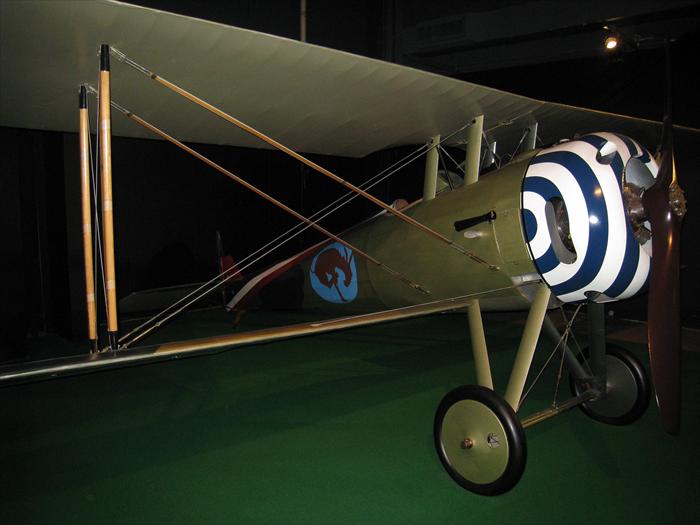
|
B-10 Martin bomber is known as the first modern bomber. As post World War I aviation redefined warfare the United States was re-defining bombers in the early 1930's. Although this plane did not server in World War II it was an prototype for future generations of bombers like the B-17. Hap Arnold said this plane was a wonder when it was produced.
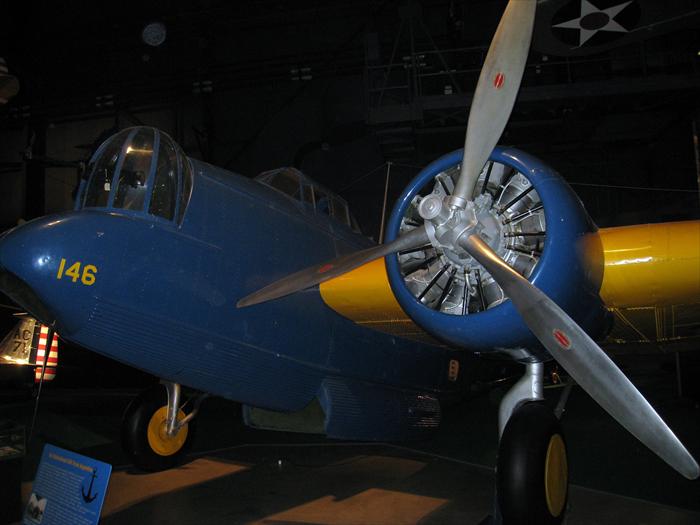
|
The legend of Kilroy Was Here. No one knows where it started, some say that a ship builder named Kilroy used it to mark rivets, some say it was used by inspectors to mark that work that was completed, and so the story continues. All that is really known is that the graffiti Kilroy Was Here because a huge part of pop culture from World War II into the 1950’s. Soldiers most likely picked it up during ship transports to overseas then started writing it to signify semblance of home as they marched through the horrors of war.
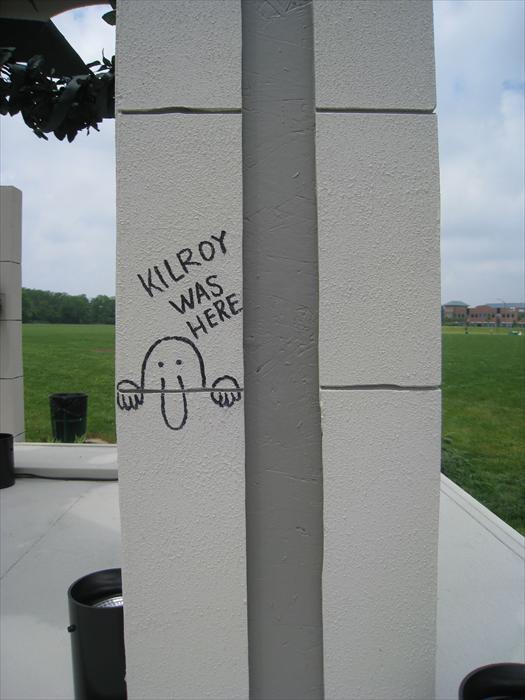
|
| |
B-25 getting ready to take off in Urbana, Ohio. This B-25 participated in the Doolittle Raider Reunion in Dayton, Ohio earlier in the day.

|
17 B-25 Mitchell bombers flew into Wright Patterson Air Force base to honor the four reminaing Doolittle Tokyo Raiders at their 68th reunion.
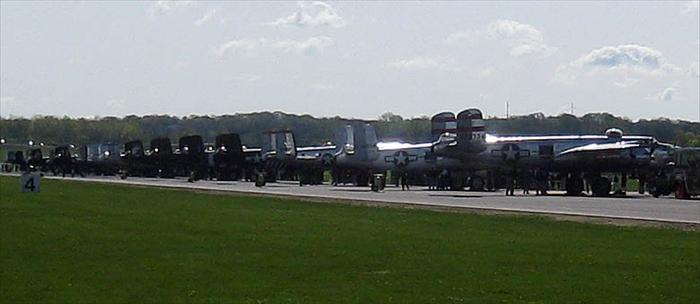
|
Lt. Col. Richard E. Cole; Major Thomas C. Griffin; Lt. Col. Robert L. Hite, and Master Sgt. David J. Thatcher reunite for their 68th Doolittle Tokyo Raid Reunion at the National Museum of the U.S. Air Force.
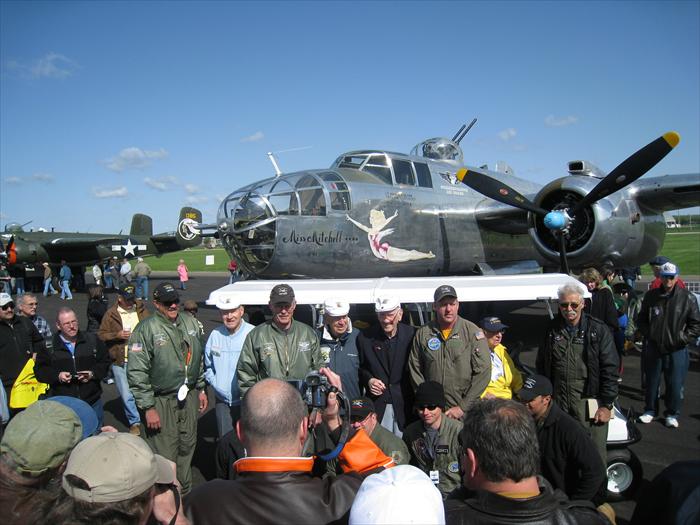
|
| |
B-25 Mitchell being checked out for flight in Urbana, Ohio.
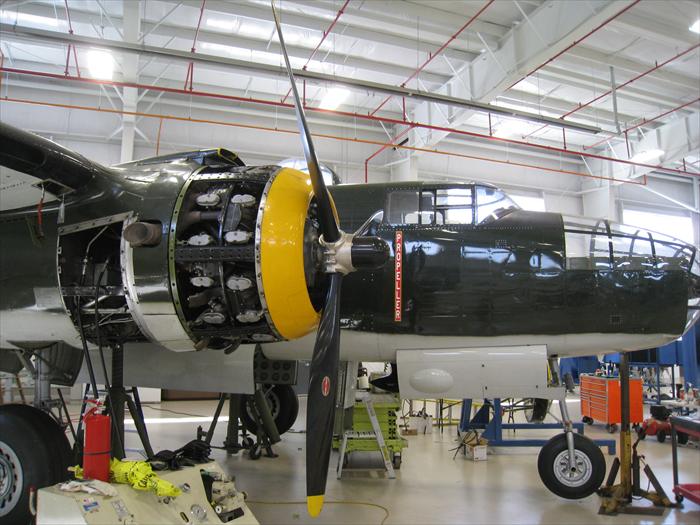
|
Beech C-45H used by Grimes Aircraft Lighting.
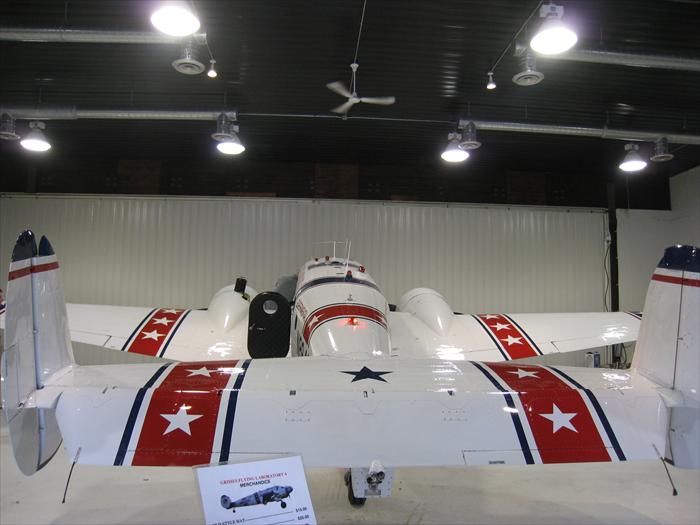
|
1911 Wright Model B airplane.
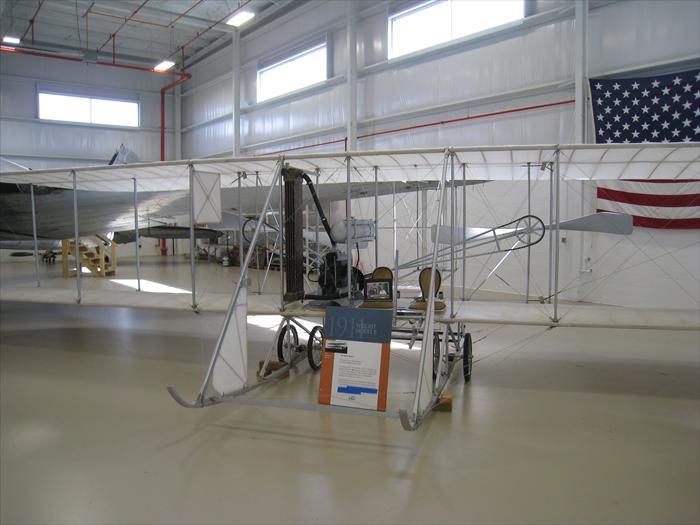
|
| |
B-2 Spirit stealth bomber.
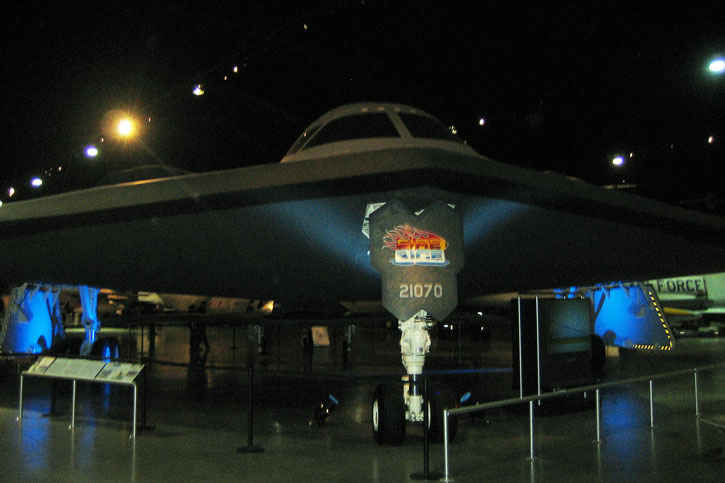
|
F-22 Raptor. Truly the most advanced aircraft in the world. Air superiority figher.

|
Bombing Run.
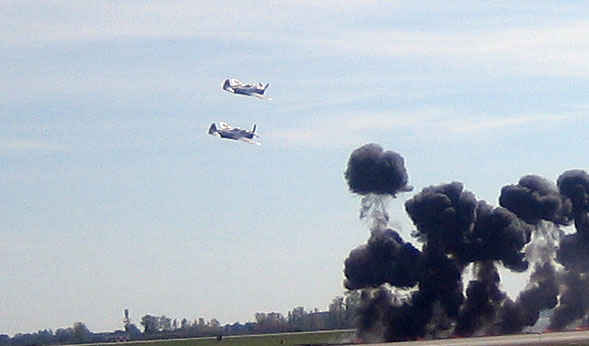
|
| |
P-40 Warhawk. Made famous by the Flying Tigers, it was a air supremacy fighter, bomber escort and fighter.
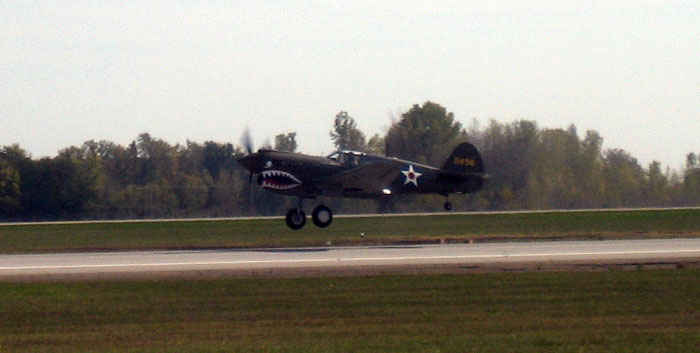
|
Nearly 100 P-51 Flying Mustangs at Rickenbacker Airport.
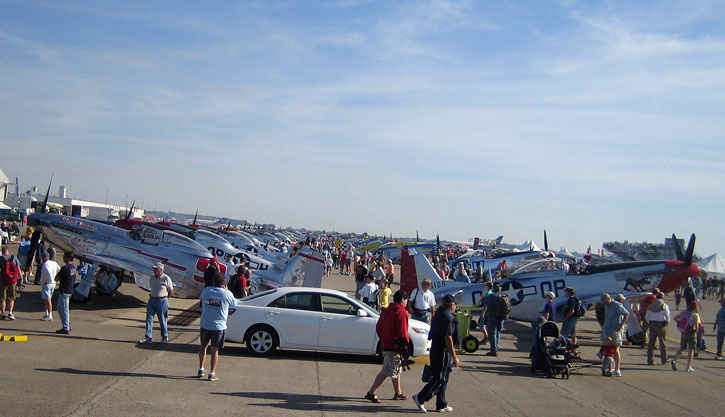
|
F-16 Fighting Falcon. Multirole aircraft servicing 24 countries with a thrust to weight ratio greater than one.
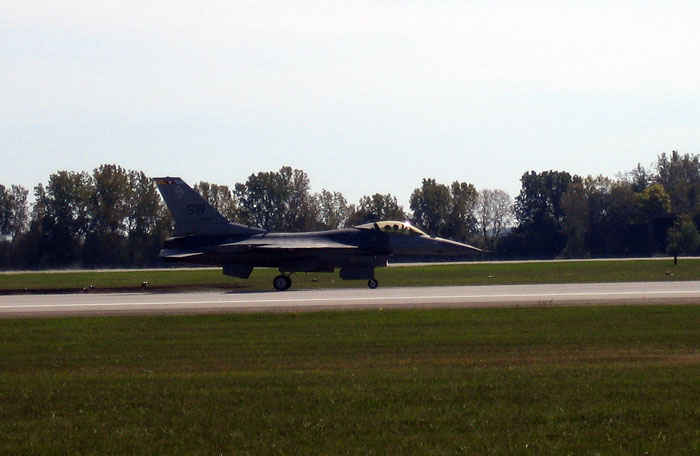
|
| |
B17 and B25 take off at the same time.
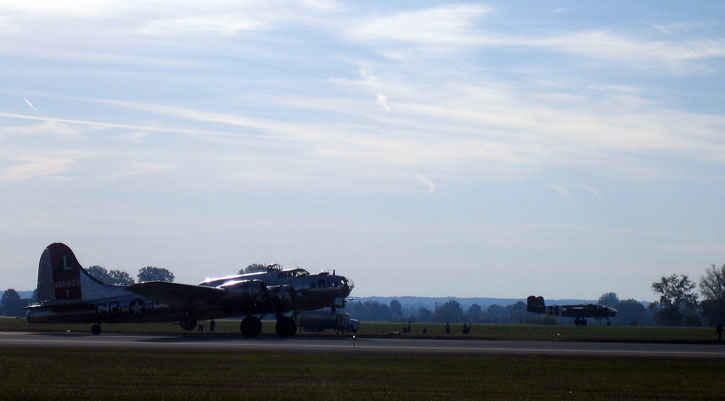
|
T-6 Texan. World War II advanced trainer aircraft.
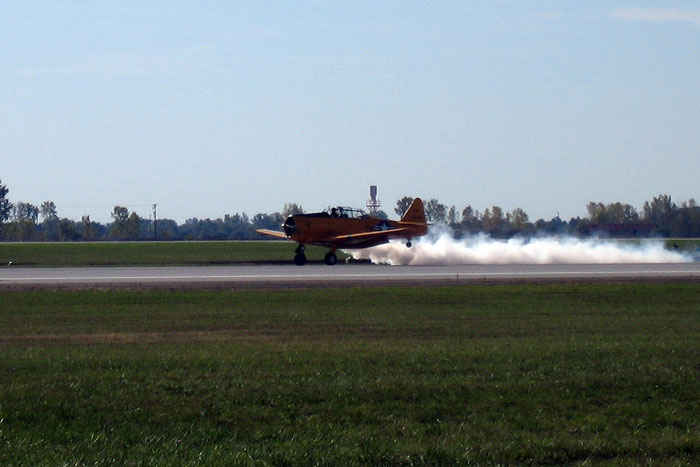
|
P-38 Lighting. Known as part of the Lost Squadron which landed on a snow capped glacier in 1942. Crews were rescued but the planes were left only to be salvaged over 50 years later under a 100 foot of ice. This is a picture of the actuall Glacier Girl which flies today.
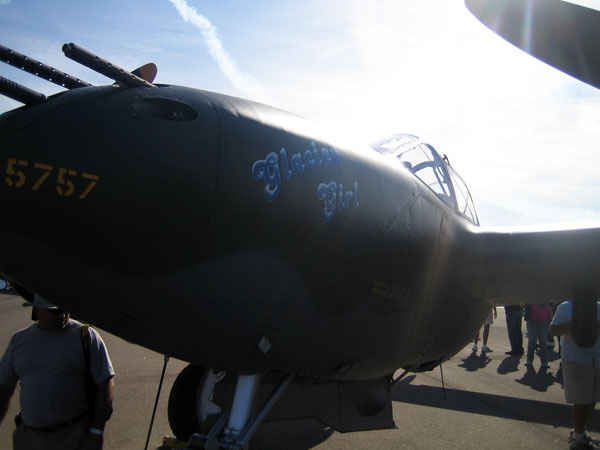
|
| |
F-15 Eagle. Highly maneuverabe which enable it to turn tightly. It can climb to 30,000 feet in around 60 seconds. The thrust output of the dual engines is greater than the aircraft's weight, thus giving it the ability to accelerate in a vertical climb.
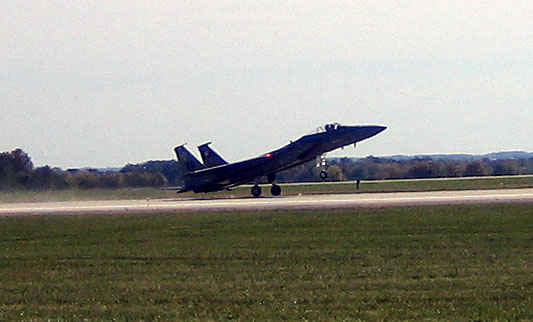
|
B-52 Stratofortress. First flew in 1952 and continues to fly today. Superior performance at high subsonic speeds and relatively low operating costs could keep the B-52 in service for decades to come.
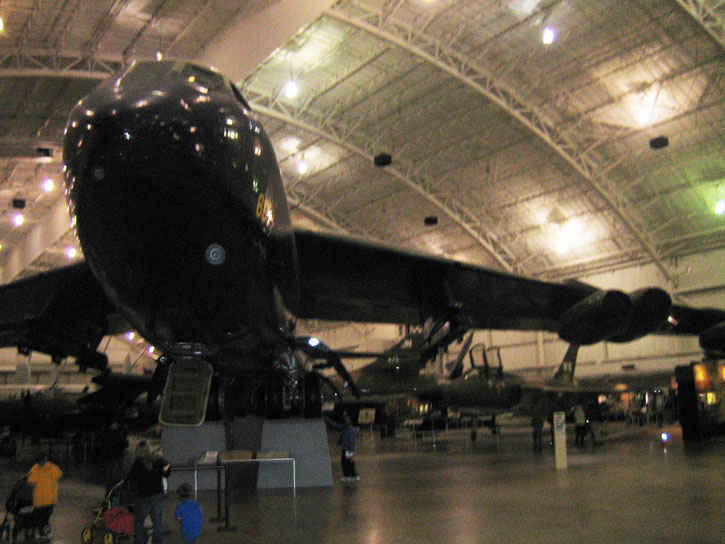
|
B-17 Flying Fortress. Dropped 600,000+ long tons of bombs on European targets which is about 1/3 dropped by all other U.S. aircraft. About 1/3 built were lost in combat.
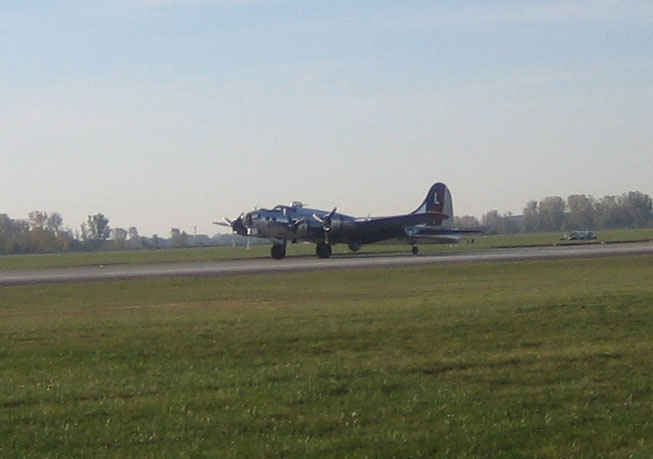
|
| |
Armored vehicle.
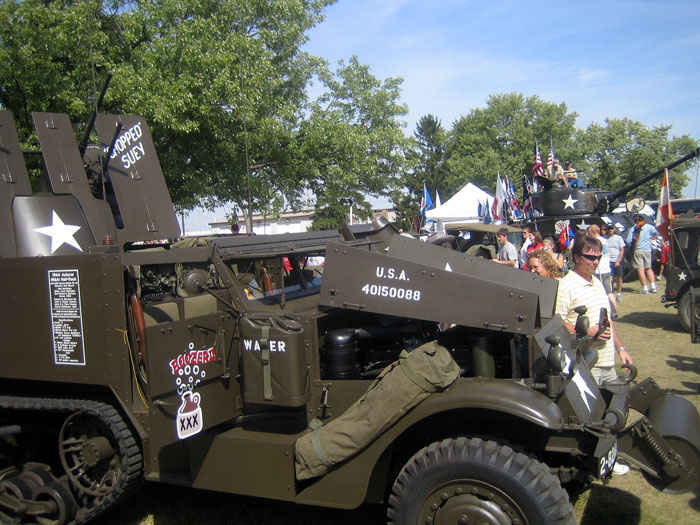
|
P-51 Mustang Crazy Horse.

|
P-51 Mustang's cockpit.
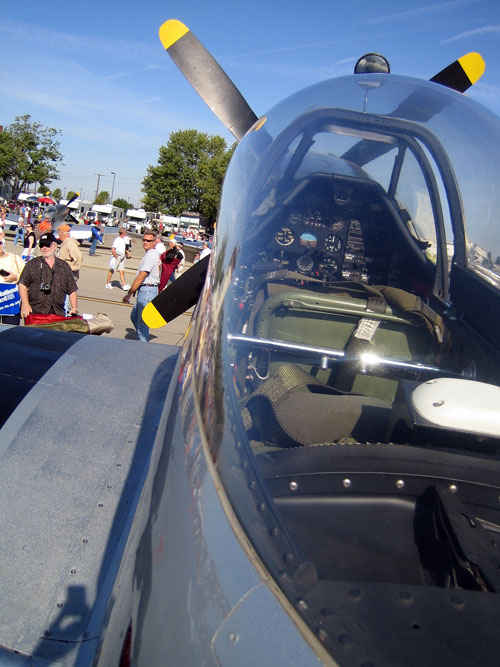
|
| |
Tail pipe of a F22, notice the thrust vectoring capability.
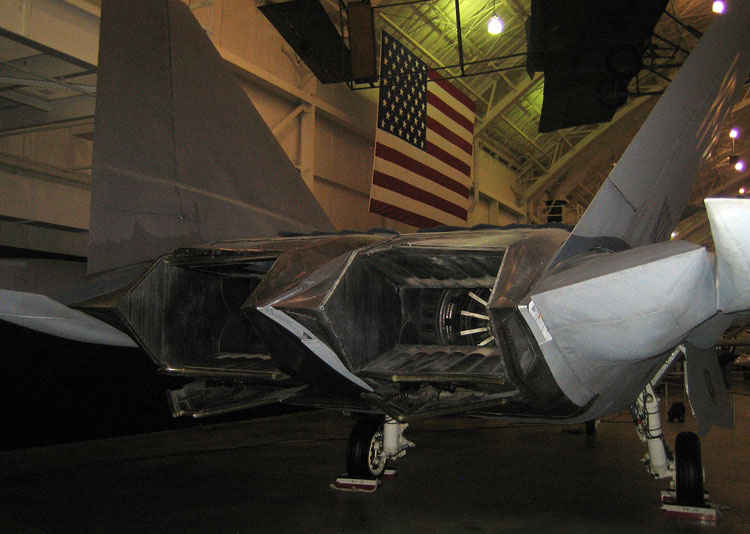
|
Lancaster a British's primary bomber used in World War 2.
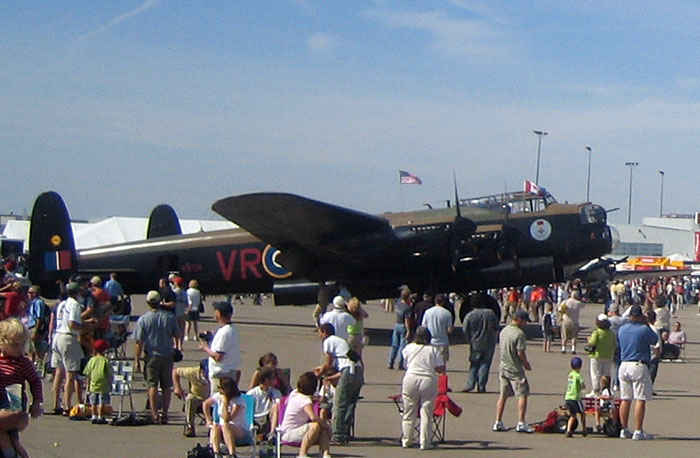
|
P51 formation at the Gathering of Mustangs and Legends (Final Roundup).
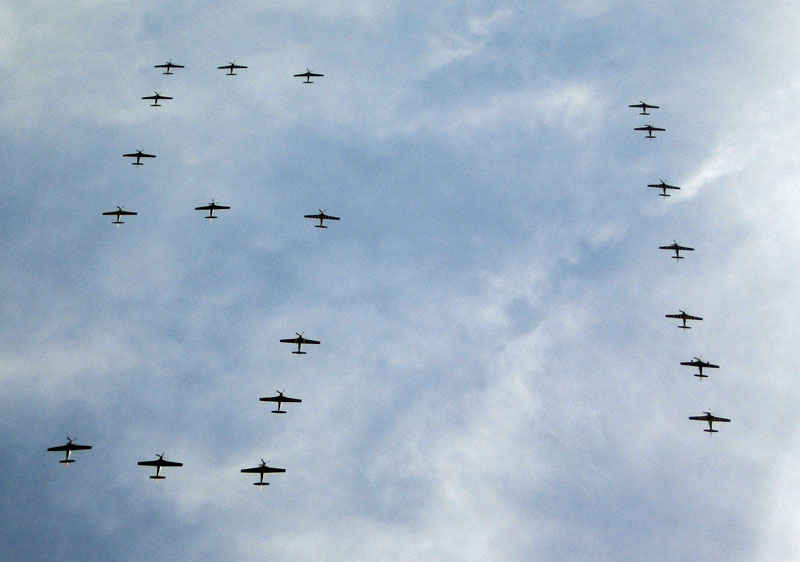
|
| |
C47 Skytrain. It was the military's version of the DC3. Main all purpose deployment aircraft used in World War 2. Many are still used today.
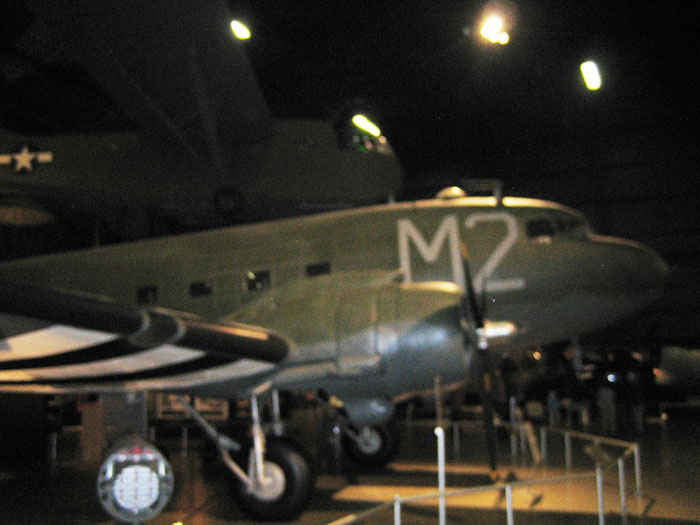
|
Fat Man, the bomb used over Nagasaki, Japan. It was an implosion-type weapon made of plutonium. The Little Boy bomb first dropped on Japan was made out of enriched uranium.
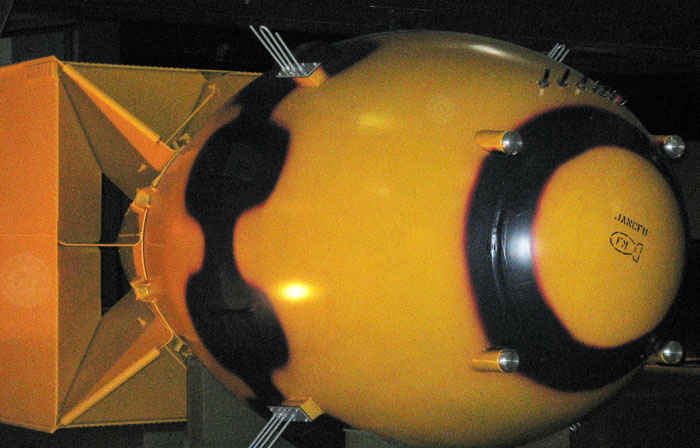
|
B-29 Superfortress. Bockscar is the bomber that dropped the "Fat Man" second atomic bomb over Nagasaki on August 9, 1945.
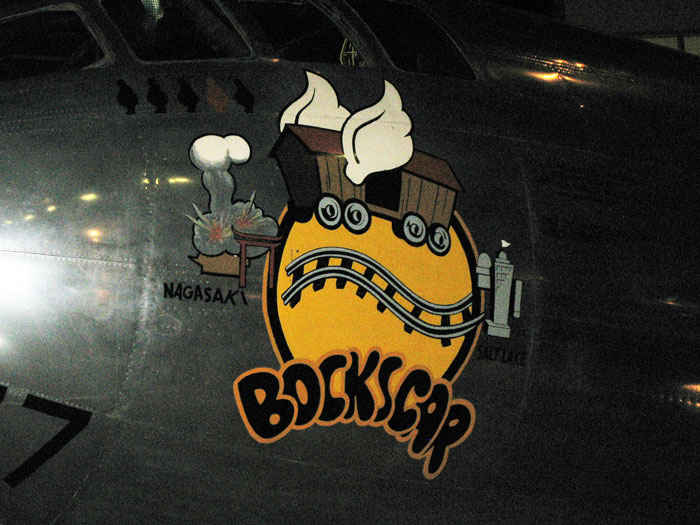
|
| |
B25 Mitchell. The bomber used in the April 1942 Doolittle Raid, in which B-25s, led by Jimmy Doolittle, took off from the carrier USS Hornet and successfully bombed Tokyo.

|
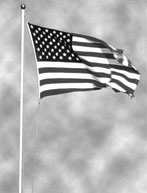
|

|